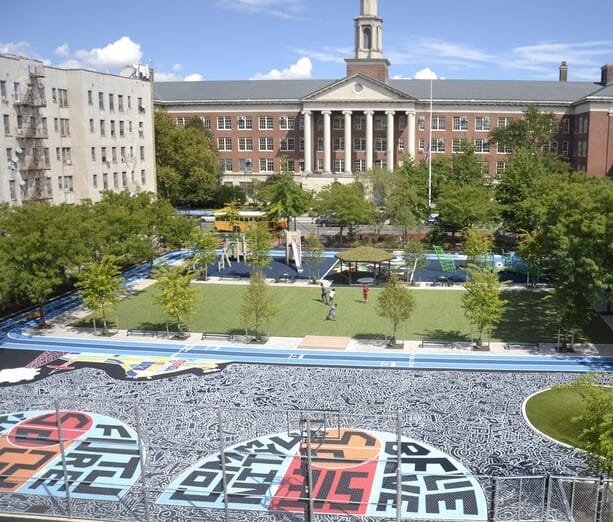

The Trust for Public Land has been transforming schoolyards for over 25 years. We have worked with more than a dozen school districts across the country and have successfully created nearly 300 community schoolyards.
With the help and expertise of dedicated staff members with decades of experience in team building, designing, constructing, and stewarding community schoolyards, we have assembled the best guidance to help you transform an underutilized schoolyard into a vibrant community space.


Community schoolyards are a center for health and climate resilience and a hub for equitable community cohesion. To achieve this standard, they need to be green, open to the community, and involve both the school and the community in the design and activation process.
A successful community schoolyard is not a product but a process.
When you create a community schoolyard, you improve the educational setting, thereby enhancing educational outcomes. You also make your school and community more resilient to climate change, improve opportunities for physical and mental health, and create a place that will bring the school and community together.

Park access may sound like a tricky concept, but it is actually pretty simple. Can a person walk to a park from their home in 10 minutes or less? If they can, then they have park access. Why 10 minutes? Research has shown that 10 minutes is about the distance most people are willing to walk.
One in three people lack access to a park within a 10-minute walk.
This is where community schoolyards can help. Many schools choose to make their community schoolyards open to the public, particularly after school hours and on weekends. When these schools are in neighborhoods without adequate park access, cities can significantly increase their park access and the multiple benefits that parks have to offer. Since school districts are often one of the largest landowners in cities and much of their exterior spaces are asphalt expanses, this is a big opportunity to create a community schoolyard.

